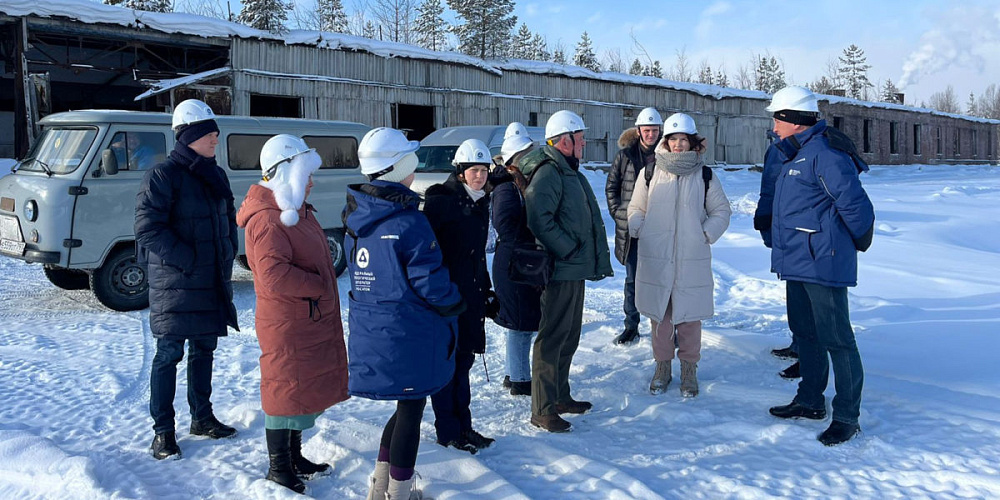The Atommash and the Izhora plants (Rosatom's Mechanical Engineering Division) have manufactured a key equipment that will be as the foundation for Generation IV power complex, a 300-MW power unit based on the BREST-OD-300 fast reactor with lead coolant. The unit is being constructed as part of the Pilot Demonstration Energy Complex (PDEC), which is under construction as part of the strategic “Breakthrough” Project on the platform of Siberian Chemical Combine (the enterprise of Rosatom's Nuclear Fuel Division).
Six items, summary weighing more than 1,000 tons,
were manufactured in total. The Atommash plant in Volgodonsk shipped to the
construction site the central void shell and inner casing for the core support
barrel. These components will hold nuclear fuel once installed. The Izhora plant
in St. Petersburg shipped four peripheral cavity shells. These will house steam
generators and pumps to ensure the circulation of the coolant. Each item is
more than 15 meters high and up to 8 meters wide.
The dimensions and shapes of the elements of the BREST-OD-300 reactor unit differ significantly from the VVER and the RITM reactor units, which have been mass-produced at the Rosatom's Mechanical Engineering Division for many years. This necessitated adapting the production facilities to handle products as tall as a five-storey building as well as developing unique packaging that weighed a total of 700 tons to safely transport and roll the equipment during installation. The products will operate at extremely high temperatures, necessitating the use of special steels with exceptional mechanical properties. These steels must withstand temperatures up to 600 degrees Celsius.
“Russian designers, engineers, and machine builders are pioneering the future of the energy industry. Our machine builders, with their extensive experience and the latest scientific advancements, were the first in the world to embark on the practical realization of the IV generation reactor project. This achievement has laid a robust foundation for technologies that will benefit our children, grandchildren, and future generations,” said Igor Kotov, Head of the Rosatom’s Mechanical Engineering Division.
The reactor unit will be assembled on the construction site. In total, about 2,300 tons of equipment will be sent to the construction site from the enterprises of the Mechanical Engineering Division, and the total weight of the installation will be 16,000 tons (including concrete, which will be used to fill the space between the products).
Rosatom's Mechanical Engineering Division stands as Russia's largest power engineering
holding in both production and revenue. It is a comprehensive provider of
reactor island and engine room equipment for all Russian-designed nuclear power
plants currently under construction as well as a manufacturer, developer, and
supplier of integrated solutions for the energy industry, oil and gas sector,
and other fields. Visit our website at rosatommd.ru to learn more.
Several production facilities within the Mechanical Engineering
Division play a key role in producing equipment for the BREST-OD-300 reactor.
Previously, the Izhora plant delivered to the construction site essential
components for the reactor shaft. These included the containment structure,
support plate, and intermediate shell, weighing over 500 tons in total.
Today, Russia stands at the forefront of
Generation IV reactor technologies. These advanced technologies promise to
revolutionize the nuclear energy sector by enhancing safety, expanding fuel
options, and significantly reducing radioactive waste. Building the Pilot Demonstration
Energy Complex (PDEC) is a pivotal goal of Russia's “New Nuclear and Energy
Technologies” project. This initiative aims to strengthen Russia's global
standing in nuclear and new energy technologies, achieve technological
self-reliance, and ensure energy security over the next five years.
The project “Proryv” (“Breakthrough”) of State
Atomic Energy Corporation Rosatom is
aimed at industrial realization of a closed nuclear fuel cycle (CNFC) based on
fast neutron reactors. The project is led by JSC Proryv, with the expertise of
leading Russian scientists and engineers. Various industry institutes are also
involved. The project will establish a nuclear power complex featuring a
lead-cooled BREST-OD-300 reactor. It will also include a stationary facility
with two key components: a module for reprocessing irradiated mixed
uranium-plutonium nitride fuel, and a fabrication/refabrication unit for
producing fuel rods from reprocessed materials. The facility is engineered to
showcase the reliable performance of systems crucial for closing the nuclear
fuel cycle.
The BREST-OD-300 will mark the world's
inauguration of a reactor plant utilizing lead as its coolant. Its design
adheres to the principles of natural safety. The reactor's efficiency will be
enhanced by the innovative mixed nitride uranium-plutonium fuel. It comprises
solely secondary byproducts of the nuclear fuel cycle: depleted uranium and
plutonium. Therefore, the development and deployment of this technology will
greatly expand the nuclear power industry's resource base. It will enable the
reprocessing of irradiated fuel assemblies to create new fuel, instead of
storing them. This will also significantly reduce the production of nuclear
waste and its radioactivity.
Russian companies are actively pursuing development initiatives and pioneering new ideas. Breakthrough technologies enhance the competitiveness of the nuclear sector and the broader domestic economy. Rosatom and its subsidiaries are deeply engaged in this endeavor.


